Parotitis, sialadenitis and salivary stones
Patients with salivary stones, parotitis or sialadenitisrequire a thorough assessment including listening carefully to the history, a directed clinical examination andusually ultrasound examination. Sometimes a CT scan and a sialogram are also required.
Treatment involves one or more of the following:
1. Conservative treatment
2. Transoral surgery
3. Extracorporeal lithotripsy
4. Sialoendoscopy
5. Open approach gland sparing surgery
6. Removal of the gland.
Conservative measures involve fluids, massage, promoting saliva production, antibiotics and analgesia.
Transoral surgery is suitable for removal of selected stones in the submandibular duct and very occasionally the parotid duct.
“Dr Francis Hall was the first to perform sialoendoscopy in New Zealand in late 2007. Our centre in Auckland is the only centre outside Europe performing this procedure for salivary duct stones.”
Sialoendoscopy involves the use of tiny telescopes that are placed in the duct of the salivary gland. Many stones are able to be removed with either forceps or a wire basket passed through an instrument channel in the scope. Some stones can be broken into smaller pieces and the pieces removed. Strictures can be dilated and kinks of the duct straightened.
Dr Philippe Katz invited Dr Hall to Paris in December 2015 where he learnt how to use extracorporeal lithotripsy to treat salivary stones. Incidentally Dr Katz was the first in the world to perform sialoendoscopy and is the most experienced doctor worldwide in the use of lithotripsy to manage salivary stones. He has published his experience in the use of this technique to treat over 1500 patients with salivary stones. External lithotripsy uses shock waves to break stones. The shock waves are delivered via an external source. There are only 7 centers in the world currently performing extracorporeal lithotripsy to treat salivary stones, of which ours is one.
Open gland sparring surgery, also known as a “combined approach” is an operation for selected parotid stones not amenable to sialoendoscopy and persisting after extracorporeal lithotripsy.
Finally some patients with persistent problems require excision of the affected gland. Dr Hall is a fellowship trained head and neck cancer surgeon and was on staff at one of the busiest hospitals in America for five years. He has removed hundreds of parotid and submandibular glands.
Drooling
Drooling is often seen in young children less than the age of five. Usually children grow out of drooling by school age. Some children especially children with special needs do not grow out of drooling and usually benefit from intervention. Treatment options include:
1. Physical therapy to assist with head control and posture
2. Botox injection to temporary switch off the submandibular glands
3. Diversion surgery where the submandibular ducts are diverted into the throat and the sublingual glands are removed. Usually this surgery is highly successful and both the patient and the parents are happy. Dr Richard Drysdale popularised this surgery and has published on nearly one thousand patients with the condition whom he has operated on (ref). Dr Francis Hall trained in Toronto at the University of Toronto Health Network where Dr Drysdale was working.
Xerostomia (dry mouth)
Causes
- Some medications-commonly blood pressure tablets, antidepressants, antihistamines, many others. Please see your GP to review your medications
- Age
- Sjogrens
- Radiotherapy-usually improves a lot by 12 months following completion of radiotherapy and continues to improve during the first two years.
- Radioactive iodine
- Diabetes
- Diabetes insipidus
Treatment
1. Address underlying cause. Please see your GP and ask if any of your medications have the side effect of a dry mouth. Exclude diabetes.
2. Fluids. Drink sufficient fluids
3. Sialogues-substances to stimulate salivation, for example, sugar free chewing gum.
4. Oral washes, for example, the Biotene range of products. Biotene contains glucose oxidase and lyxozyme.
5. Saliva substitutes. Oralube and xanthan gum-Xialine.
6. Pilocarpine. There have been two randomised clinical trials showing that pilocarpine helps the dry mouth associated with radiotherapy. Pilocarpine is a cholinergic medication, usually given in the dose of 5 mg three times per day. Side effects including sweating, nausea, diarrheoa, urinary frequency and dizziness may limit its use in some patients.
Note: patients with xerostomia should be very diligent with their dental hygiene. This is particularly important for patients who have had radiotherapy to the head and neck region.
1. Clean teeth twice a day
2. Dental floss daily
3. Fluoride trays daily for radiotherapy patients (see your dentist to obtain these)
4. Biotene daily for radiotherapy patients
5. Regular dental check-ups. It is very important that radiotherapy patients tell their dentist that they have had radiotherapy before any dental work is done.

